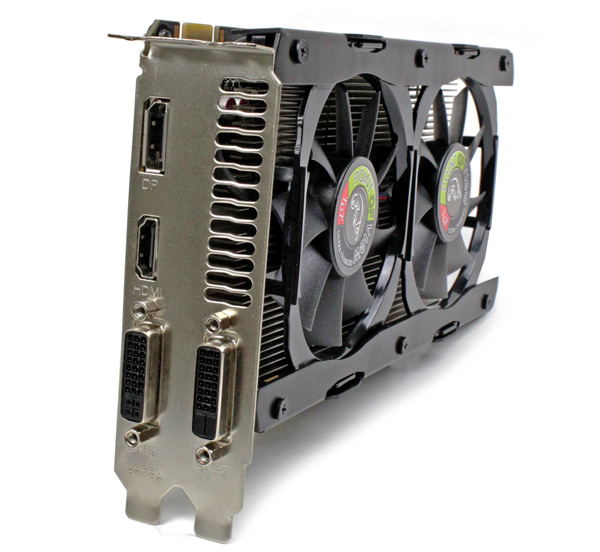Index
The Ultra Charged (UC) cooling is dual slot, just like the reference solution. Reference cooling employs radial, so called blower style fan, that pushes the air through the heatsink, dissipating heat from the GPU outside the case through the slits in the bracket. The UC’s cooler has two axial-flow fans. So, we’re talking about open type of cooling, where fans are positioned over and blow at the heatsink. This also means that hot air stays inside the case.
True, the reference card pushes air out of the case, and it may cause some to worry about their computer overheating, but there’s really no need to. Namely, the GK106 GPU doesn’t get very hot and your computer won’t really notice this change. Besides, it’s nothing that a few quality intake fans wouldn’t effectively nullify, and then some.
The cooler looks well made. The framework holding the fan is made of metal, which definitely looks better than plastic. However, the main part of the cooling is the heatsink, which stretches the entire length of the PCB.
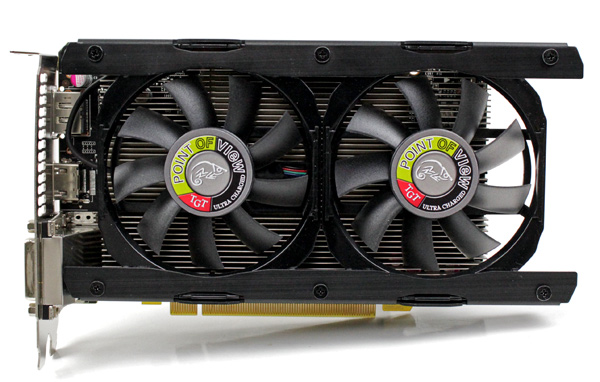
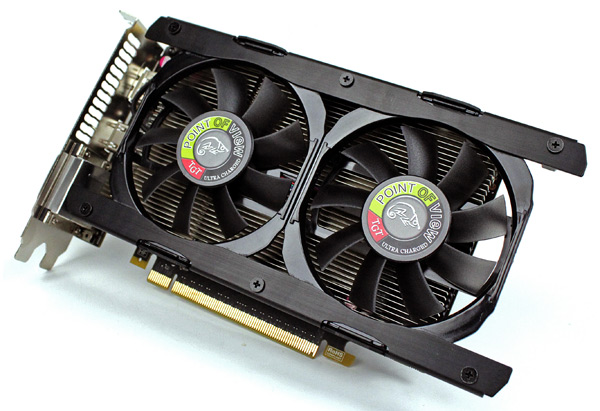
The cooler has many screws, which suggested taking the card apart will be a lengthy procedure, but we were surprised how quickly it can be done. The cooler is old school, for lack of a better word, where the cooling shroud is held in place with easily detachable clips.
The cooler fins, as well as the aluminum plate, are tough and massive. The wide channels between the fins provide for quality airflow from the axial fans. The heatsink is one slot wide, but the fan takes up another.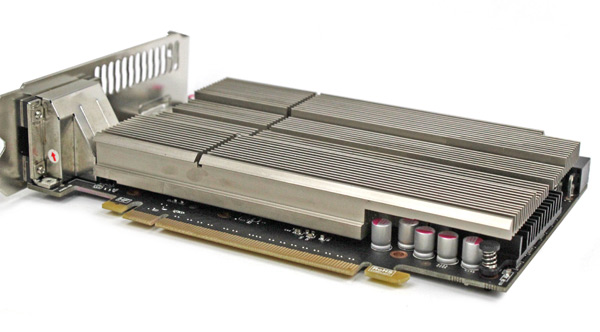
One fan is connected via four wires, while the other has three. However, Colorful gathered them into a single cable with four wires and routed it to the PCB. The fans in question are sleeve bearing fans CF-12815S, DC 12V, max 0.28A, that we haven’t seen before. RPM readouts are possible, as well as manual or automatic fan control.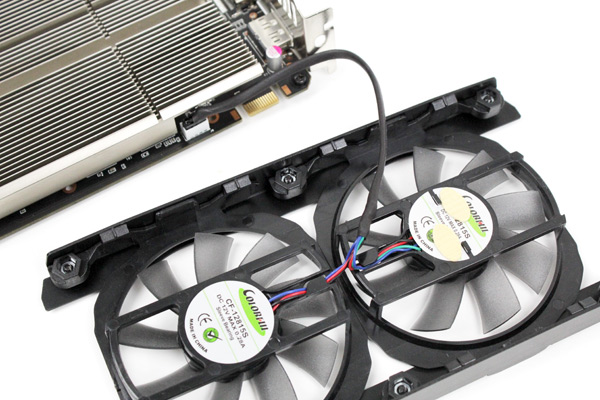
The cooler has no heatpipes but instead relies on the large copper base. The base isn’t limited to the part above the GPU, which is usually the case, but instead covers a large part of the heatsink, in order to boost performance. The heatsink is one slot wide, but the fan takes up another.

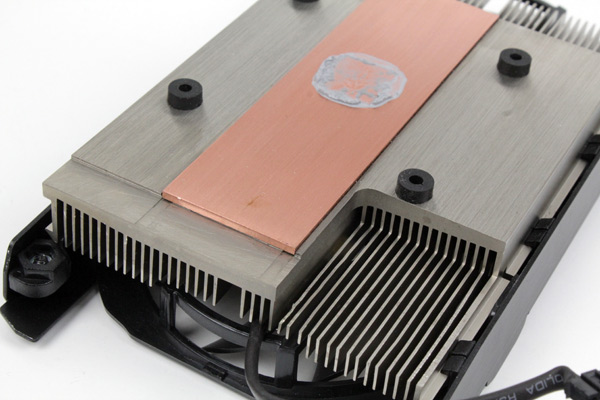
Taking off the main heatsink revealed a smaller one that provides cooling for the voltage regulation circuitry. Power circuitry on GTX 660s PCB is towards the end of the PCB, exactly the opposite of how it was implemented on GTX 670 and GTX 660 Ti cards.

Nvidia’s specs require one 6-pin power connector since the card’s TDP is 140W. The connector is in the top corner, at the end of the card, and it’s turned upwards so that the cooler extension doesn’t get in the way when plugging the cable in.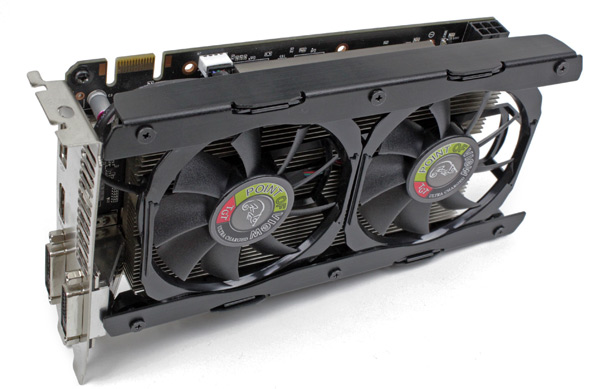
The GTX 660 has a single SLI connector, which is usual for this price segment. So, it’s possible to boost performance and use two cards in SLI mode, but not more than that. The GTX 650 Ti doesn’t feature SLI support, whereas the GTX 660 Ti supports 3-way SLI.
The PCB is 17.3cm in length but the cooler extended the GTX 660 UC’s length to exactly 20cm. The rest of GTX 660 cards that use reference blower style cooling are 24.3cm.
GTX 660 UC packs a total of 2GB of Samsung’s GDDR5 memory, in eight memory modules. Four of the modules are placed on the back. The memory doesn’t require cooling, which is pretty much confirmed by the factory overclock.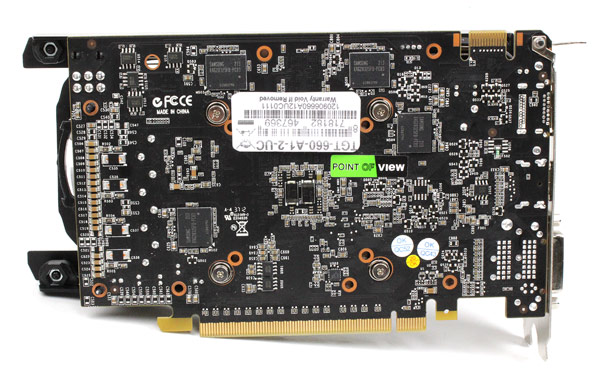

If you like plenty of video outs on your graphics card, then you should know the GTX 660 UC offers the full deal. The card can drive up to four displays simultaneously, two via dual-link DVI outs, one standard HDMI and standard DisplayPort.